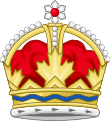
Back Kanada kortumsistemo Esperanto Système judiciaire du Canada French System sądowniczy w Kanadzie Polish Система правосудия Канады Russian
 |
|---|
The court system of Canada is made up of many courts differing in levels of legal superiority and separated by jurisdiction. In the courts, the judiciary interpret and apply the law of Canada. Some of the courts are federal in nature, while others are provincial or territorial.
The Constitution of Canada gives the federal Parliament of Canada exclusive jurisdiction in criminal law, while the provinces have exclusive control over much of civil law.[1] Each province has authority over the administration of justice within that province.[2]
Most cases are heard in provincial and territorial courts. Provincial and territorial superior courts have inherent jurisdiction over civil and criminal cases.[3] Provincial and territorial lower courts try most criminal offences, small civil claims, and some family matters.[4]
The smaller federal court system consists of the Federal Court, Federal Court of Appeal, and Tax Court. There are also the courts martial, for military offences, with an appeal to the Court Martial Appeal Court. The jurisdiction of the Federal Court and the Federal Court of Appeal is limited to cases where the subject matter is within federal jurisdiction and regulated by federal law, and where the administration of that law has been conferred upon the federal courts by a statute passed by Parliament.[5] These matters include immigration and refugee law, navigation and shipping, intellectual property, federal taxation, some portions of competition law and certain aspects of national security, as well as the review of most federal administrative decisions.[6] The federal courts and provincial and territorial courts share jurisdiction over civil actions against the federal government.
The Supreme Court of Canada is the final court of appeal for all levels of court in Canada. Any legal issue, whether under the Constitution of Canada, federal law, or provincial law, potentially can be heard and determined by the Supreme Court.
The federal government appoints and pays for both the judges of the federal courts and the judges of the superior appellate and trial level courts of each province.[7][8] The provincial governments are responsible for appointing judges of the lower provincial courts.[2] Although not judicial courts themselves, administrative tribunals also feed into the provincial/territorial and federal court hierarchies. This intricate interweaving of federal and provincial powers is typical of the Canadian constitution.
- ^ Constitution Act, 1867, ss. 91 and 92
- ^ a b Constitution Act, 1867, s. 92(14)
- ^ Government of Canada, Department of Justice (April 17, 2002). "Department of Justice - Department of Justice Canada - Canada's Court System". www.justice.gc.ca. Retrieved March 1, 2024.
- ^ Government of Canada, Department of Justice (September 7, 2016). "The judicial structure – About Canada's System of Justice". www.justice.gc.ca. Retrieved March 3, 2024.
- ^ Federal Court of Canada. "Federal Court - Jurisdiction". www.fct-cf.gc.ca. Retrieved March 1, 2024.
- ^ Government of Canada, Department of Justice (September 7, 2016). "Courts and Other Bodies Under Federal Jurisdiction - Canada's Court System". www.justice.gc.ca. Retrieved March 1, 2024.
- ^ Constitution Act, 1867, s. 96
- ^ Government of Canada, Department of Justice (September 7, 2016). "The judicial structure - About Canada's System of Justice". www.justice.gc.ca. Retrieved March 1, 2024.